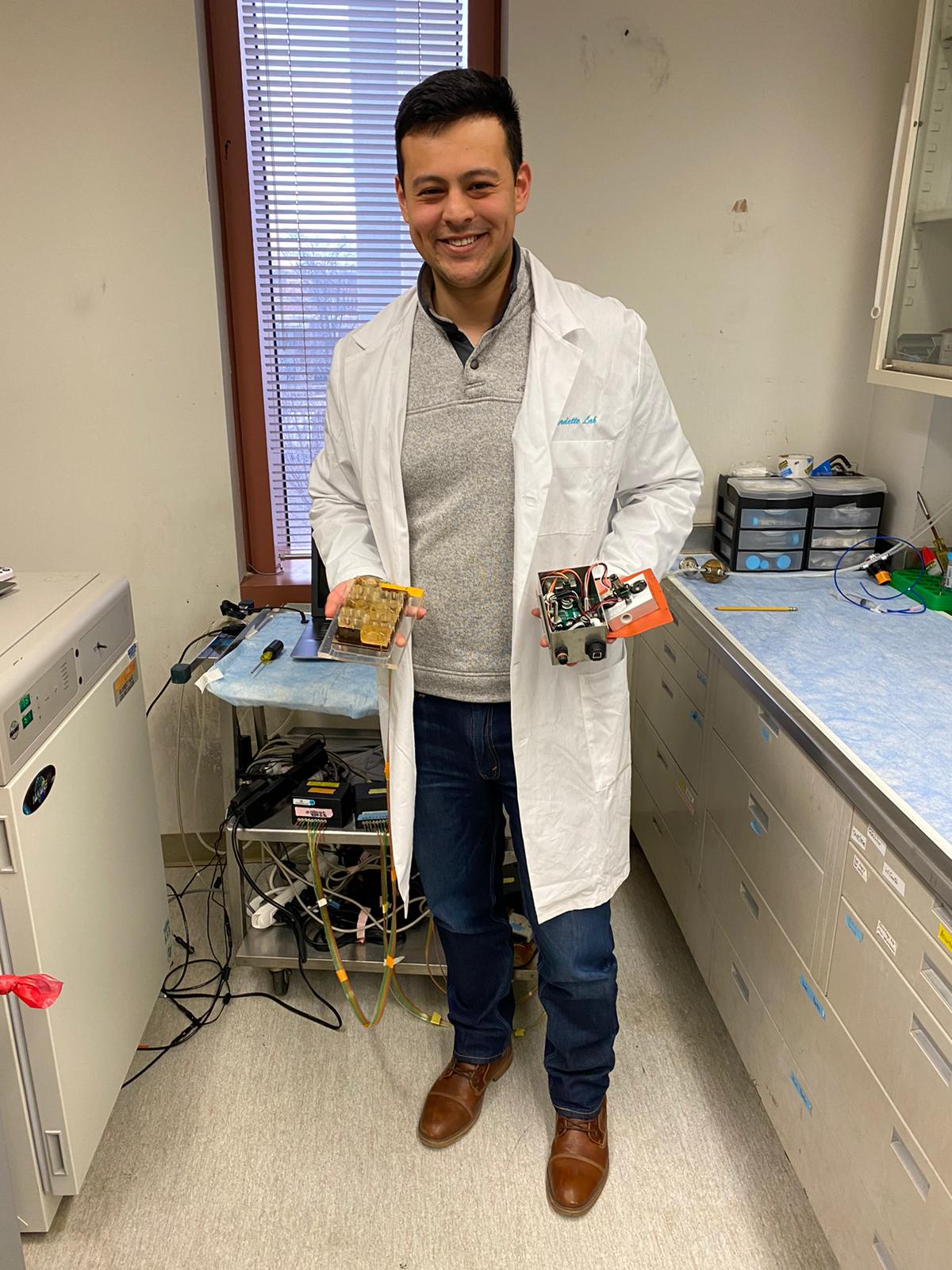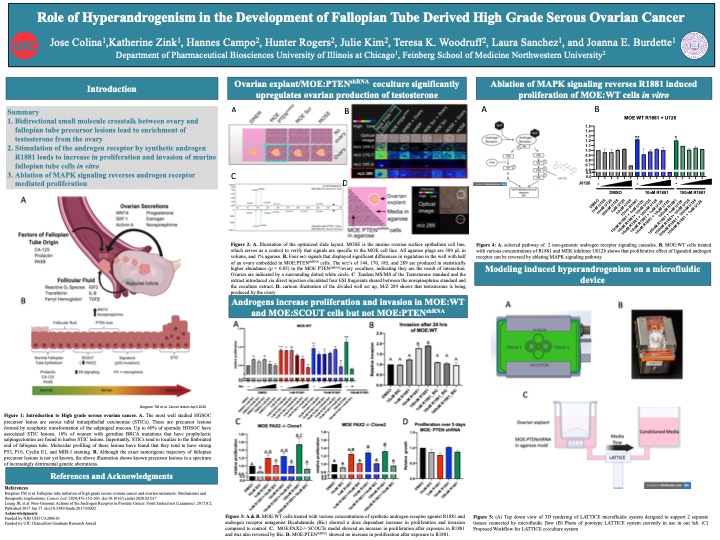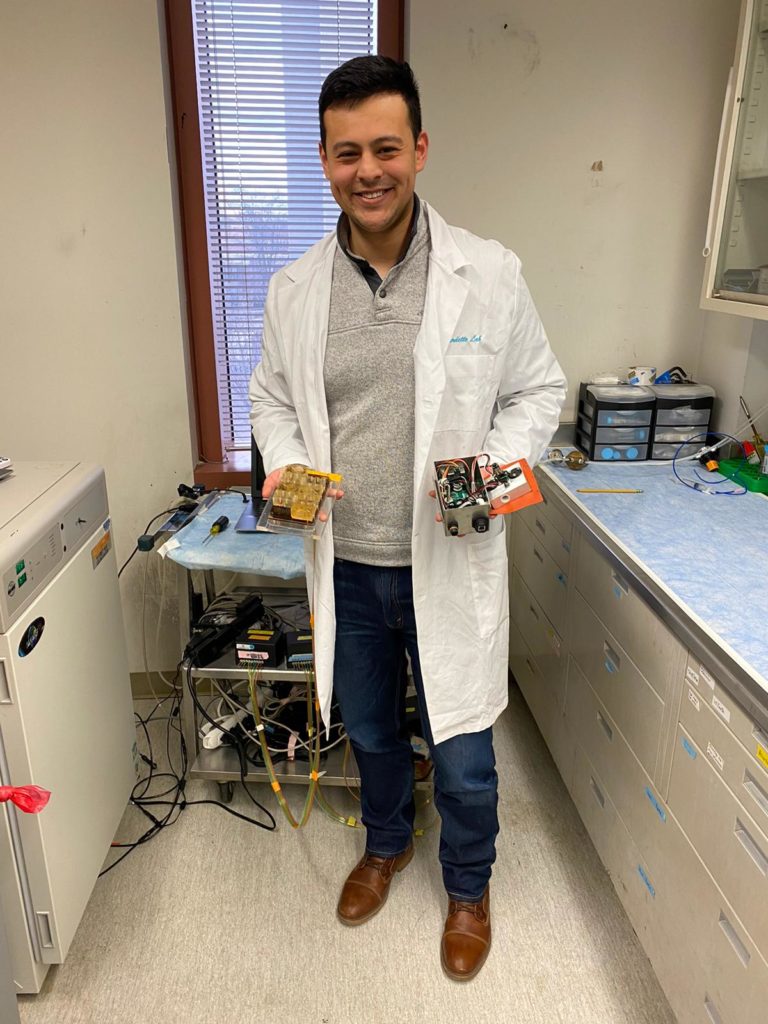

Jose Colina
Mentor: Joanna Burdette, PhD
An estimated 22,440 women were diagnosed with ovarian cancer last year. Of those individuals, an estimated 14,080 died of the disease, making ovarian cancer the most lethal gynecologic malignancy in the United States. High grade serous ovarian cancer (HGSOC) is the most common subtype of the disease.
If caught early, ovarian cancer has a 92.1% five-year survival rate; however, 79% or more of the individuals are diagnosed after metastasis has occurred, lowering late-stage five-year survival to 28.8%. The incessant ovulation hypothesis holds that a lifetime of ovulatory cycles increases a woman’s chance of developing fallopian tube derived HGSOC.
Colina and his colleagues hypothesize that ovarian secreted factors and follicular fluid contribute to carcinogenesis in the Fallopian Tube Epithelium (FTE). He and his teammates have developed three-dimensional cultures of the ovary and fallopian tube that can support ovulation in a microfluidic platform. Imaging mass spectrometry has revealed tumor initiating molecules that are secreted by the ovary in the presence of precursor lesions in the FTE, including testosterone.
The team’s data shows that FTE exposure to androgen agonists increase proliferation through aberrant MAPK signaling. Furthermore, androgen exposure increases in vitro invasion and mesenchymal markers that can be blocked by androgen antagonists. Reducing tumor initiation from ovulation, blocking proteins that attract FTE to the ovary, and disrupting steroids responsible for colonization of the ovary could provide avenues for reducing ovarian cancer mortality through surgery and small molecule strategies.

“I am delighted and honored to have been selected as a poster competition winner at this year’s Gary Kruh Symposium. This is one of my favorite conferences each year because it gives researchers an opportunity to interact and make connections with people whom our work can benefit. The symposium reminds us of the importance of community engagement with science, and helps science become more accessible. I am always encouraged by patients’ curiosity in our work and willingness to share their stories with us.”
